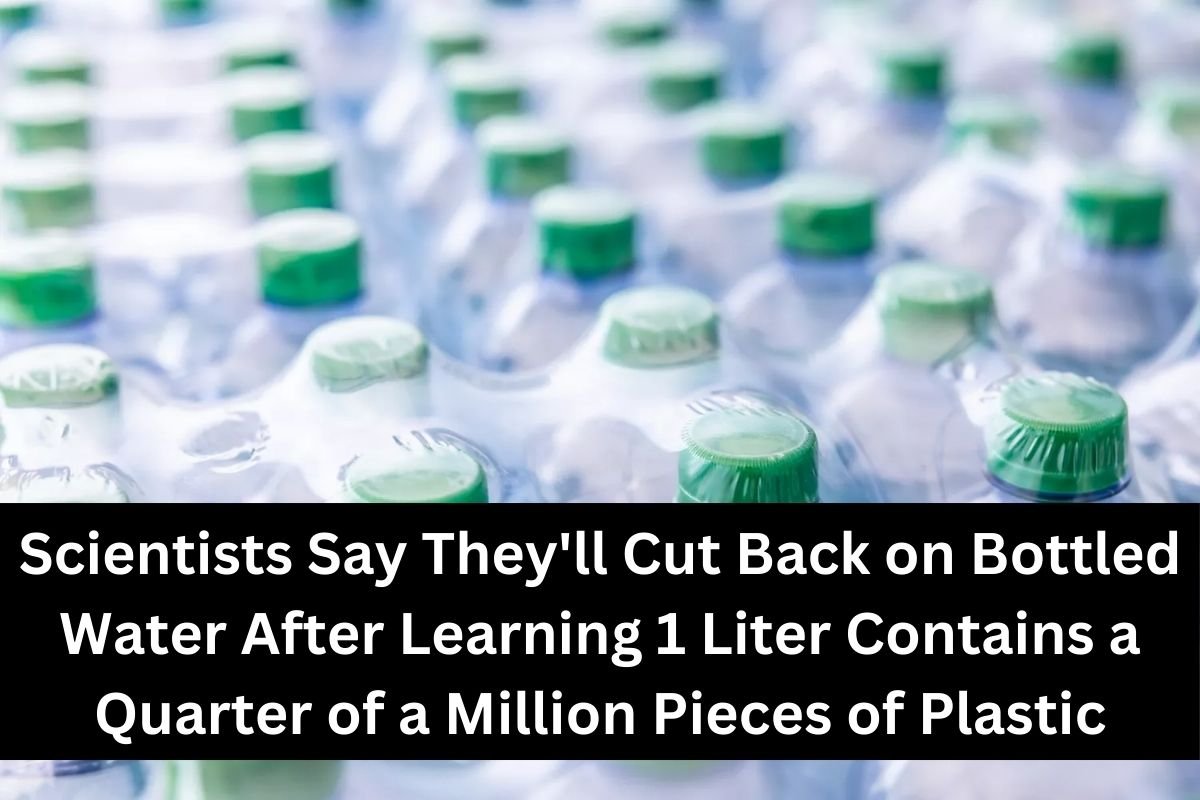Scientists Say They’ll Cut Back on Bottled Water After Learning 1 Liter Contains a Quarter of a Million Pieces of Plastic :-It has been discovered that the typical liter of bottled water contains a quarter of a million pieces of microscopically small plastic. The researchers who made this finding have stated that even though it may not be harmful, it has caused them to reduce the amount of bottled water that they consume.
Advertisement
Advertisement
Scientists Say They’ll Cut Back on Bottled Water After Learning 1 Liter Contains a Quarter of a Million Pieces of Plastic
Advertisement
Advertisement
- When researchers used laser-powered microscopes to examine samples from three different brands of bottled water, they found that each liter of water included anything from 110,000 to 400,000 fragments of plastic ranging from one to three hundred thousand.
- Their findings, which were published in the Proceedings of the National Academy of Sciences, indicate that this amounts to an average of approximately 240,000 little particles of plastic.
Advertisement
- Naixin Qian, the principal author of the study, told NBC News that all three of the brands that were examined were common brands that were purchased from a big national shop. However, the brands that were assessed were not identified.
- According to the authors of the study, ninety percent of the plastic fragments were not microplastics but rather nanoplastics, which are even smaller than microplastics.
- Nanoplastics are “believed to be more toxic because their smaller size renders them much more amenable, compared to microplastics, to enter the human body,” the study stated.
:max_bytes(150000):strip_icc():focal(683x143:685x145):format(webp)/microplastics-011024-2-bd64296a1f99486e8018e6ce4afc3bd0.jpg)
-
Around 240,000 pieces of plastic are contained within a single liter of bottled water. This is the amount of plastic that is contained within the water. Based on the average of the numbers.
- As the National Library of Medicine explains, “Microplastics (MPs) are plastic particles with a diameter less than 5 mm, while nanoplastics (NPs) range in diameter from 1 to 100 or 1000 nm [nanometer].”
Advertisement
- To help you better comprehend the magnitude of the situation, one centimeter is equal to ten million nanometers. This will help you put the magnitude of the situation into perspective.
- Furthermore, the researchers came to the conclusion that the plastic originated from the bottle itself, in addition to the filtering technique that was employed by the water businesses. The removal of pollutants from the water was meant to be accomplished by this method
Advertisement
- Phoebe Stapleton, a toxicologist who was contributing to the study as a co-author, stated to NBC News that the potential health impact is “currently under review.” No one knows whether or not it is dangerous, or how dangerous it is.
- Nevertheless, according to the findings of a study that was published in the National Library of Medicine, “the results of cellular and animal experiments have shown that microplastics can affect various systems in the human body, including the digestive, respiratory, endocrine, reproductive, and immune systems.”
Advertisement
- According to the findings of that study, microplastics have the potential to produce chemical toxicity, which is characterized by the absorption and buildup of environmental pollutants such heavy metals and polycyclic aromatic hydrocarbons.
- As a result of their findings, the researchers have said that they are reducing their consumption of bottled water: Stapleton admitted to NBC News that she is now drinking water that has been filtered from the tap,
- while her colleague Wei Min, who is a scientist, stated that he has decreased the amount of bottled water that he consumes.
Advertisement
:max_bytes(150000):strip_icc():focal(700x176:702x178):format(webp)/microplastics-011024-3-14711fbe39544334a685b60e70baac3a.jpg)
Advertisement
- Nevertheless, according to Beizhan Yan, a chemist who was a co-author of the study, “there’s just no win” because water filtering technologies have the potential to inject microplastics into the water supply.
- The presence of microplastics in human cardiac tissue was identified in August of last year. According to a study that was conducted in June 2023 and published in the United States News & World Report, it was found that people breathe in a quantity of microplastics that is similar to the size of a credit card on a weekly basis.
Advertisement
- Foods that are sold in popular supermarkets, such as Annie’s Organic and Del Monte, have been found to have chemicals that would last forever.
- “We know these microplastics are all over the place,” Albert Rizzo, the chief medical officer of the American Lung Association, said in an interview with National Geographic. There is no way for us to determine whether or not the presence in the body causes an issue.
Advertisement
- The duration is of utmost significance. It is important to consider how long you are exposed.
“In the meantime,” he inquired, “is it possible to make plastics safer?”
Advertisement
